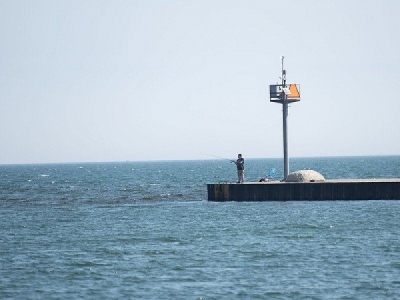
Posted on June 4, 2018
By Tim Fenster, Niagara Gazette
U.S. Sens. Chuck Schumer and Kirsten Gillibrand announced Tuesday that the Senate Water Resources Development Act will authorize the first-ever Great Lakes Coastal Resilience Study, aimed at preventing erosion and other damage to lakeshore communities from Minnesota to Northern New York.
The four-year, $12 million study — funded by $3 million from the eight Great Lakes states and $9 million in federal funds — will be handled by the U.S. Army Corps of Engineers and is part of a larger, more long-term effort aimed at protecting those who live and work along the approximately 5,200 miles of U.S. Great Lakes coastline.
In a press release announcing the study, Gillibrand and Schumer cite the damage from Lake Ontario’s high water level last spring and summer, which caused flooding and erosion-related damages to the tune of tens of millions of dollars. They also note that about 4.2 million Americans live within 2 miles of a Great Lake shoreline, and that the region’s maritime industry generates $17.3 billion and about 293,000 jobs, while Great Lakes tourism and recreation is an industry valued at $14 billion.
“The ongoing and devastating flooding that occurred all along our Lake Ontario, and to some degree Lake Erie, shorelines last year was a resounding wake-up call that we must do more — and fast — to better protect all our lakefront communities from ongoing flood threats,” Schumer, the Senate Minority Leader, said in a statement. And the bottom line is that authorizing the Great Lakes Coastal Resilience Study in this year’s Water Resources Development Act is the first step to making this long-term effort come to fruition.”
Schumer added that the study aims to identify solutions and projects to protect shoreline communities from flooding and erosion.
In a statement, Gillibrand touted her work as a member of the Senate Environment and Public Works Committee in pushing for the study in this year’s Water Resources Development Act.
“New Yorkers shouldn’t have to worry about whether their shoreline protections are strong enough to withstand flooding from rising water levels or storm surge,” Gillibrand said. “With this provision, we are one step closer to putting the right protections in place and making sure that the damage caused by last year’s high water levels does not happen again.”
Last May, the water level on Lake Ontario reached a record high at almost 3 feet above the average for the time of year when the water level peaks. Erosion and flooding caused tens of millions in damages. State lawmakers have provided $95 million in relief funds for affected homeowners, business-owners and municipalities, but relief awards are capped at $50,000 and is only for external damages and breakwalls; docks, decks, boathouses and any lost personal property is not covered.
Some homeowners and lawmakers say the flooding was exacerbated by a new water level regulation plan, saying it prevented regulators from releasing water in February and March of 2017 in anticipation of the high spring inflows. Many want the new regulation plan repealed, but doing so requires a majority vote of the International Joint Commission, a bi-national boundary waters treaty organization that consists of three U.S. and three Canadian commissioners.
Scientists at the U.S. Army Corps of Engineers say precipitation caused the high water levels, and that the new regulation plan hadn’t made a difference.
In recent months, Lake Ontario has fluctuated at water levels that are several inches above the long-term average. County and local governments stocked sandbags, pumps and other equipment at locations near the shoreline months ago in anticipation of another round of high water.
Source: Niagara Gazette





